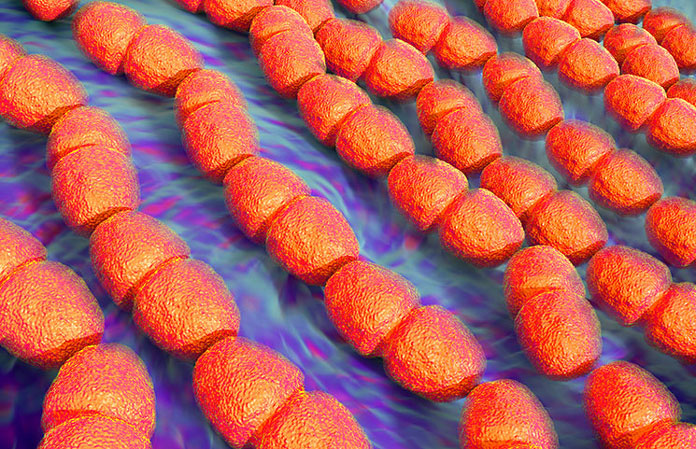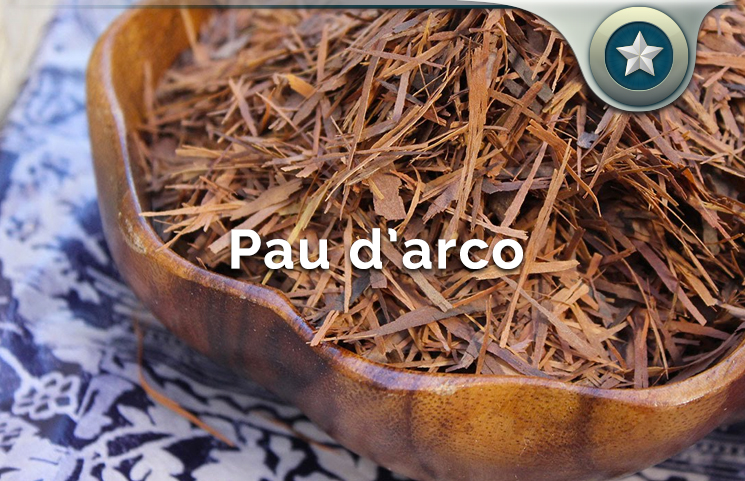The term Pau D’Arco is used to refer to an herb that is derived from the Brazilian rainforest and other areas of South America. The herb has been used since the ancient times for the treatment of different diseases. Modern medicinal applications of Pau d'arco can be traced back to the late 1800s.
The common uses of the medicinal plant include the treatment of cancer and other infections caused by microorganisms. The chemical components that are responsible for its medicinal properties include beta-lapachone and lapachol. The chemical components are found in the inner bark. Lapachol can get rid of the pain that is caused by cancer.
The beta-lapachone works by disrupting the ability of the cancer cells to spread to other parts of the body. Many reports have been released that demonstrate the ability of the herbaceous plant to get rid of leukemia.
Table of Contents
About Pau D’Arco
Research that was carried out to illustrate the activity of Pau d'arco against cancer cells was stopped because the amount of the herb that was effective against cancer was thought to be poisonous. The excessive amount of the herb was also linked to other risks such as internal bleeding.
However, the herb is still used in other places such as South Africa for the management of cancer. Other countries such as Argentina dispense the herb freely to patients diagnosed with leukemia. Pau d'arco is the standard form of treatment for particular types of cancers and infections in Brazil.
Common infections that can be managed with the herb include infections of the prostate gland, sexually transmitted diseases, yeast infections, parasitic infections, H1N1, and fungal infections, among others.
The activity against these infections is due to the chemical component selenium which is the present in the inner bark. The chemical element has antioxidant properties. The herb is also used in the management of dermatological infections such as acne. Research has also shown that it boosts the ability of the immune system to fight against pathogenic organisms.

Uses And Benefits Of Pau D’arco
1. Management Of Pain
According to research, Pau D’Arco can alleviate pain experienced by patients having cancer. Besides reducing the pain that is associated with cancer, the herb can also relieve other forms of pain that result from other conditions such as arthritis.
Pau d'arco is commonly used to reduce pain that is associated with prostate cancer, liver cancer, and breast cancer. A study that was published in 2001 analyzed the anti-nociceptive and anti-edematogenic properties of the anticancer herb.
The study was conducted on laboratory animals, which were put through pain stimulated by nerve cells. The study found out that the extract blocked the sensory signals that initiated the pain process.
2. Management Of Ulcers
Ulcers are sores that occur in the lining of the upper gastrointestinal tract. Gastric ulcers are those that develop in the lining of the stomach. When the ulcers develop in the first part of the duodenum, they are referred to as duodenal ulcers.
When the acid present in the stomach forms sores in the lining of the gastrointestinal tract, it results in peptic ulcer disease. A peptic ulcer is one of the most common gastrointestinal disorders according to the American Gastroenterology Association.
The risk factors associated with ulcers include stress, smoking, alcohol, Helicobacter pylori, and medication such as analgesics. Helicobacter pylori is a type of bacteria that may lead to the development of peptic ulcer disorder. The disease commonly presents with a burning pain in the stomach that is caused by contact between stomach acid with the ulcerated area.
According to a study that was published in Phytotherapy Research, it was found that Pau d’arco helped in the management of acetic acid-induced gastric ulcers in animals. The herb acted by increasing the production of mucus, as well as cell proliferation.
The study concluded that Pau d'arco could help treat peptic ulcer disorder in humans. The antioxidant property of selenium may also assist in the removal of Helicobacter Pylori.
3. It Has Anticancer Properties
The most common use of Pau d'arco involves the management of cancer. It is also used to relieve pain that results from the spread of cancerous cells. According to a study that was conducted by Dana-Farber Cancer Institute in Boston, the chemical component beta-lapachone can fight prostate cancer.
Another study that was undertaken in 2002 found that beta-lapachone can be used alone or in combination with other chemotherapy drugs in the management of cancer.
4. Management Of Inflammation
Inflammation is the body's response when toxins from the environment and food accumulate in the body. As a result, the body's immune system is kept active, leading to an inflammatory response that may lead to different diseases.
Minimizing the inflammatory response in the body reduces the chances of developing disorders such as asthma, Crohn’s disease, cardiovascular diseases, cancer, and arthritis among others.
A study that was published in the Journal of Toxicological Sciences concluded that Pau d’arco promoted the synthesis of Nrf2-target genes in the intestines. Nrf2-target genes are proteins that control the expression of antioxidant proteins. The antioxidant proteins protect the body from oxidative damage that may result from inflammatory responses, as well as tissue injury.
5. Gets Rid Of Candida
Candidiasis is a common yeast infection that is caused by candida. The yeast infection is a risk factor for many health problems, such as a sore throat and problems in the gastrointestinal tract. Candidiasis symptoms present when the body’s natural pH balance is compromised.
Overproduction of yeast, or candida, in the body may present with headaches, hyperactivity, and chronic fatigue syndrome, among others. An overgrowth of yeast in the mouth or vagina may also be observed. Studies have shown that Pau d’arco can be used in getting rid of candida in a natural manner.

6. Detoxification Of The Body
Pau d’arco can be used for the removal of toxins from the body in a natural way. Most ancient communities have used the herb as a natural detoxifier. The toxins that can be removed using the herb include heavy metals, preservatives, and pesticides, among others.
Through its laxative effects, Pau d'arco has been shown to loosen the bowels, promoting digestion. Stimulating of the digestive tract helps the removal of excess fats and toxins that have accumulated in the gastrointestinal tract. It is advisable to keep food moving smoothly through the digestive tract.
Unhealthy food particles are likely to build up in the gastrointestinal tract after one consumes highly processed foods. It is important to consume detoxifying foods such as Pau d'arco to clean the body and keep it healthy.
Pau d'arco has been used as an antiviral herb for many years. The herbaceous plant has been shown to inhibit, kill, and prevent the replication of different viruses such as those causing HIV, common cold, and poliovirus, among others.
The chemical component, beta-lapachone, inhibits the activity of the enzymes involved in the synthesis of viral DNA and RNA. As a result, the ability of the virus to replicate itself and infect other cells is compromised.
The medicinal plant has been shown to heal skin wounds and infections that may be caused by fungi. The chemical components have antifungal properties that reduce irritation and skin swelling.
Risks And Side Effects Of Pau D’arco
When Pau d’arco is consumed in high doses, it may result in gastrointestinal disturbances, including nausea, vomiting, and diarrhea. One may also present with dizziness and severe internal bleeding upon taking the herbal preparation in high doses. It is advisable to get in touch with a health care provider whenever any of the side effects arises.
The anticancer herb is contraindicated in pregnant women and nursing mothers. There is no sufficient information on the safety of the drug in unborn babies and newborns.
Pau d'arco has been shown to interfere with the clotting process in the body. Individuals who are undergoing the treatment of bleeding disorders should not use Pau d'arco because it may worsen their bleeding.
The herbal preparation may also interfere with the activity of the coagulants. Pau d'arco should not be used on patients who have undergone a surgical procedure, since it may prolong the bleeding. It should not also be given to patients who are being prepared for a surgical procedure. The medicinal plant should not be used at least two weeks before and after surgery. Anticoagulants and antiplatelet agents should also be avoided.

Top Products Containing Pau D’Arco
Traditional Medicinals Yellow Pau D’Arco Tea
The product has been used historically by the people of South Africa for its health benefits. It has an earthy taste that is slightly bitter. It has a rating of 4.6 stars out of a possible 5 stars on Amazon. It is sold at $26.86.
Nature's Way – Pau D’Arco Inner Bark
The product is recommended for use as a dietary supplement. Two capsules should be taken twice daily with water or food. It is formulated with other ingredients such as magnesium stearate. It has an overall rating of 4.4 stars out of a possible 5 stars on Amazon. It is sold at $10.11.
Now Foods Pau D’Arco
The serving size is two capsules. Servings per container are 50 capsules. It is manufactured by NOW Foods and has an overall rating of 4.7 stars out of a possible 5 stars. The product’s selling price $6.50.
Pau D’Arco Review Summary
The quality of the inner bark of the tree affects its effectiveness. The bark should be aged for maximum efficiency. The medicinal plant should be taken in small doses to prevent the occurrence of side effects.









